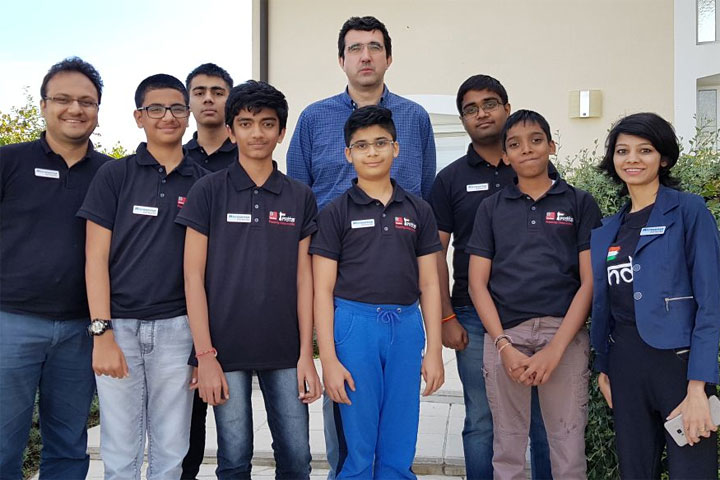Tres días con Kramnik en Chens-Sur-Leman
El segundo día de la sesión de entrenamiento "Kramnik Microsense Chess India Program" en Francia, el foco principal estuvo en el tema de los finales de partidas.
Para comenzar la jornada, Vladimir Kramnik les planteó un problema de ajedrez.
¡A ver si Ud. consigue encontrar la solución también! Prueba a ver al mover las piezas en nuestro tablero interactivo:
Gukesh andaba por el pasillo para acercarse a la ducha. Le comenté que luego le tenía que enseñar un problema chulo de finales que Kramnik me había enviado por Whats App. Gukesh se acercó para echarle un vistazo breve a la pantalla de mi teléfono móvil y luego desapareció en el baño.
Pensé que todavía necesitaría un momento para espabilar y desperarse del todo y que ya se lo enseñaría de nuevo luego en la sala de entrenamiento. Pero cuando Gukesh salió de la ducha exclamó: "¡Ya tengo la solución!"
¿Y eso? Pues, había memorizado la posición al instante en los 30 segundos que había mirado mi teléfon en el pasillo y había ideado la solución mientras se duchaba.
Entonces, ¿cuál fue la respuesta?
1.♕f1! comentó Gukesh. Y entonces todo el mundo se dio cuenta cuál había sido la idea. ¿No es precioso es problema de finales? Si las negras toman en 1...♚xe6 y las blancas dan mate con... Sí, correcto, con 2.♕f5#!! Esa casilla está atacada tres veces pero todas las piezas atacadoras de repente ¡se quedan clavadas! Y si las negras procuran defenderse moviendo el el caballo, ay, 2.♕f6 y mate; si moviese la torre, pues 2.♕f4#; y si movimiese la dama es mate por la torre o la dama en la columna "e". ¡Vaya manera de empezar el día! ¡Genial!
Las tablas Syzygy de todos los finales de 5 piezas y los 143 más importantes de 6 piezas, en un lápiz USB 3.0 de 128 GB, listo para usar.
Endgame Turbo 5: primeros pasos Entrenamiento de finales
Vladimir Kramnik normalmente suele llegar para las sesiones de entrenamiento hacía las 10:30 de la mañana. Habría que ver lo que están haciendo los chicos entre el momento de despertarse y la llegada de Kramnik. Parecen estar en algún tipo de trance. No es que sean soñolientos, sino más bien lo contrario. Tiene las cabezas funcionado a cien y todo el mundo está calculando posiciones y problemas en la cabeza.
Praggnanandhaa, por ejemplo, nos informó que había refutado algunas cosas del análisis que habíamos realizado la noche anterior. Leon despertó a Iniyan y Raunak ilusionado, informándoles que las blancas ya no están ganando en una posición en la que al día anterior pensaban que sí.
Prithu estuvo a punto de entrar en el baño pero luego vio que dos de sus compañeros estaban analizando. Se sentó a su lado con la toalla y el champú en la mano y se apuntó al análisis de sus amigos durante los próximos 30 minutos.
Se ve que la casa de los campeones está nebulizándose por los pensamientos de ajedrez en todas las habitaciones.
Desde luego se les nota a los chavales indios que el ajedrez es la cosa más importante en la vida.
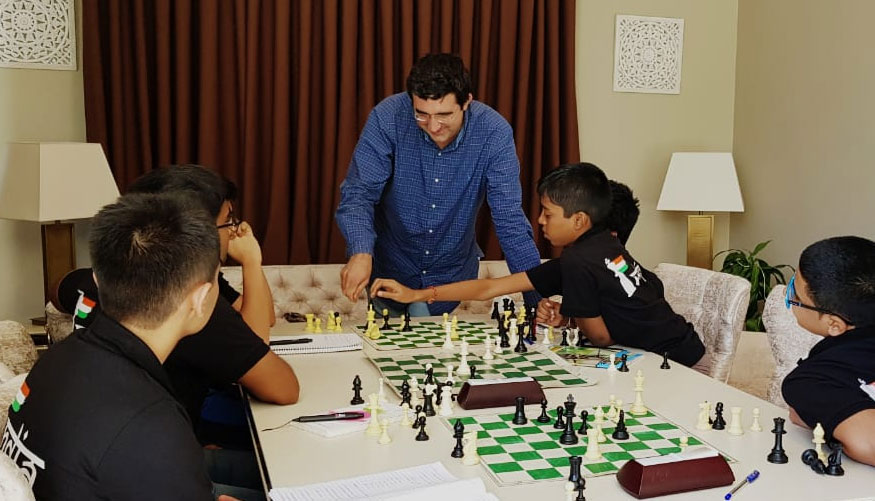
Vladimir Kramnik con sus pupilos
Kramnik mostró diez de sus propias partidas en las que había derrotado a los mejores jugadores del mundo gracias a posiciones ligeramente favorables para él en la fase final de la partida.
El truco siempre había sido que procuraba mejorar la situación de sus piezas y dar el golpe en el momento más apropiado. Es fácil decirlo, pero muy difícil de hacerlo de verdad. Pero Kramnik lo consiguió. No es por nada que es uno de los mejores jugadores de la historia de ajedrez.
He aquí uno ejemplo:
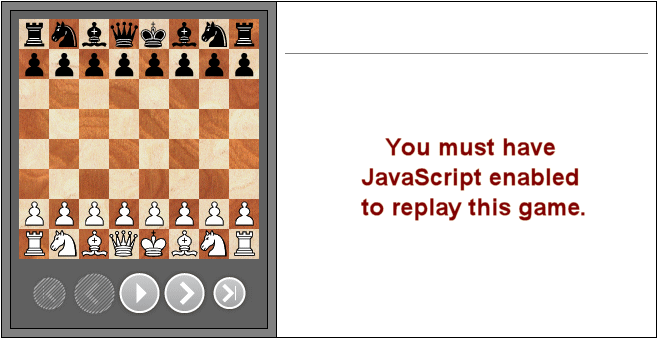
[Event "Corus"] [Site "Wijk aan Zee"] [Date "2000.01.15"] [Round "1"] [White "Kramnik, Vladimir"] [Black "Adams, Michael"] [Result "1-0"] [ECO "E15"] [WhiteElo "2758"] [BlackElo "2715"] [SetUp "1"] [FEN "2q3k1/p3bppp/1p3n2/3p4/3B4/1P1P2PP/PQ3PB1/6K1 b - - 0 26"] [PlyCount "46"] [EventDate "2000.01.15"] [EventType "tourn"] [EventRounds "13"] [EventCountry "NED"] [EventCategory "18"] [SourceTitle "CBM 075"] [Source "ChessBase"] [SourceDate "2000.04.05"] [SourceVersion "1"] [SourceVersionDate "2000.04.05"] [SourceQuality "1"] {To excange queens on c3 or not? These are the types of difficult questions you need to solve if you want to become an endgame expert. And somehow there is no right or wrong answer. How do you decide what is good or not? This is where the experience of Kramnik comes into the picture. According to him, White hasn't really reached the stage in this endgame where he should be exchanging the queens. He still needs to improve his position and keep the option open with regards to exchange. And that's the reason why 27.b4! was played. One may argue that 27.Qc3 was also good, and Kramnik himself is quite cautious in putting down a move as bad, but when you see how the game progressed you will realize that keeping the queens was definitely a much better decision.} 26... h6 27. b4 Qe6 28. Qc3 Ne8 29. a4 Bf6 30. Kh2 Qd7 31. a5 Kh7 32. Bxf6 Nxf6 33. Qe5 Qd8 34. a6 Kg8 35. d4 b5 36. Bf3 Kf8 37. Kg2 Kg8 38. h4 Qb6 39. Bxd5 Nxd5 40. Qxd5 Qxa6 41. Qd7 Qg6 42. Qe8+ Kh7 43. d5 a5 44. bxa5 b4 45. d6 b3 46. d7 Qc6+ 47. Kh2 Qf3 48. Qe1 Qd3 49. a6 1-0
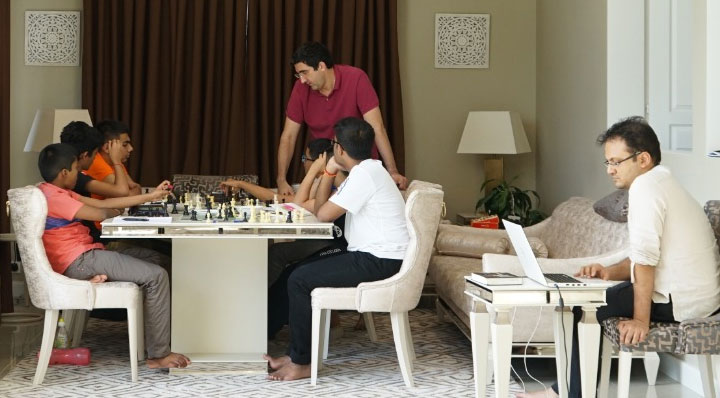
Eso es como se están entrenando
This DVD allows you to learn from the example of one of the best players in the history of chess and from the explanations of the authors (Pelletier, Marin, Müller and Reeh) how to successfully organise your games strategically, consequently how to keep y
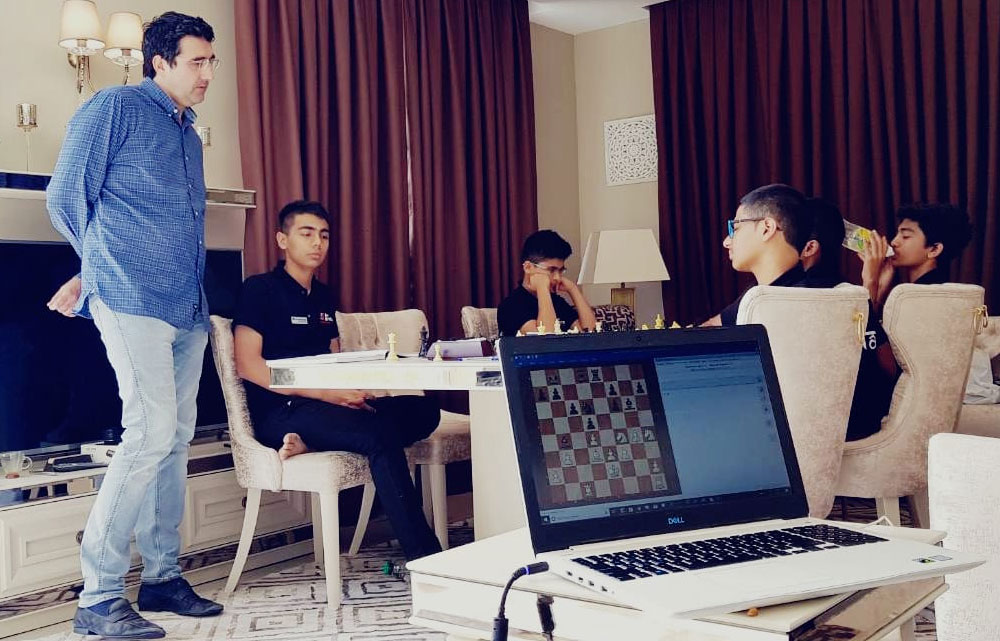

[Event "Qatar Masters op"] [Site "Doha"] [Date "2014.12.03"] [Round "8"] [White "Salem, AR Saleh"] [Black "Kramnik, Vladimir"] [Result "0-1"] [ECO "D63"] [WhiteElo "2586"] [BlackElo "2760"] [Annotator "Sagar Shah"] [PlyCount "110"] [EventDate "2014.11.26"] [EventType "swiss"] [EventRounds "9"] [EventCountry "QAT"] [SourceTitle "CBM 164"] [Source "ChessBase"] [SourceDate "2015.01.15"] [SourceVersion "1"] [SourceVersionDate "2015.01.15"] [SourceQuality "1"] 1. d4 Nf6 2. c4 e6 3. Nf3 d5 4. Nc3 Nbd7 {This is a small tweak in the opening. Main moves are of course Be7 which leads to the QGD and Bb4 which leads to the Ragozin. With this move Nbd7, Black keeps the game in QGD territory but gets some additional options.} 5. Bg5 (5. Bf4 c6 6. e3 Nh5 {Though only tried in blitz by Carlsen and Kramnik, it could be possible that Kramnik was intending to play this today and that is the reason why he chose 4...Nbd7 move order.}) 5... h6 6. Bh4 Be7 7. e3 O-O 8. Rc1 c5 9. cxd5 Nxd5 (9... exd5 10. Bd3 $14 { is a definite edge for White from the opening.}) 10. Bxe7 Nxe7 {White should be slightly better here. Black has played the opening quite unambitiously. But White's advantage is not very threatening as Kramnik proves over the next few moves.} 11. Be2 {The bishop looks much better placed on e2 than on d3.} (11. Bd3 b6 12. O-O Bb7 13. Qe2 (13. e4 cxd4 14. Nxd4 Ng6 $15) 13... Bxf3 $1 14. Qxf3 cxd4 15. exd4 Nf6 $11 {In this IQP position where two pairs of minor pieces have been exchanged and also the d5-square is under the control of the knights, Black shouldn't be worse.}) 11... b6 12. O-O Bb7 13. dxc5 Nxc5 14. Nd4 (14. Qxd8 Rfxd8 15. Rfd1 Nd5 (15... Rac8 16. Nb5 Rxd1+ 17. Rxd1 Bd5 $11) 16. Nxd5 Bxd5 17. b3 $11 {and in this symmetrical position I wonder how Kramnik would have won. But I am nowhere near Kramnik's technique so it's better that I do not get into it! The position however looks completely drawish.}) 14... Nf5 $5 15. Nxf5 exf5 {Why would Kramnik voluntarily double his pawns? Maybe he just wanted to unbalance the position in some way or the other, no matter how little.} 16. Bf3 $6 {I dislike this move. It might be objectively fine but if White wanted to play safely then why not just exchange the queens and play Rfd1?} (16. Qxd8 Rfxd8 17. Rfd1 $11) 16... Qxd1 17. Rfxd1 Bxf3 18. gxf3 Rfd8 19. Kf1 {Bringing the king into the centre is natural.} (19. Rxd8+ Rxd8 20. Rd1 Rxd1+ 21. Nxd1 {This position might not hold any advantage for Black but it is a very timid decision of trying to exchange both the rooks and bringing your knight to an unfavourable square. Something that Salem Saleh being an aggressive player would dislike. Also White has no reasons to resort to such exchanging operations.}) 19... g6 20. Ke2 Kg7 21. Nb5 Kf6 22. Rxd8 Rxd8 23. b4 (23. Nxa7 {I like this variation because it is quite unusual.} Ra8 24. Nc8 $5 { This is the surprising move.} Rxa2 (24... Rxc8 25. b4 Ra8 (25... Ke5 26. bxc5 bxc5 27. a4 Kd5 28. Kd3 Ra8 29. Ra1 Ra5 30. Kc3 h5 31. h4 $11) 26. bxc5 Rxa2+ 27. Kf1 bxc5 28. Rxc5 $11 {and even the best technique in the world cannot win this.}) 25. Rc2 Ra6 (25... Na4 26. Kd2 Ra1 27. b3 Nc5 28. b4 Nd7 29. f4 Rh1 30. Rc7 $14) 26. Nxb6 Rxb6 27. Rxc5 $11) 23... Ne6 24. Rc6 (24. Nc7 Rd7 (24... Rc8 25. Nd5+ $18) 25. Nxe6 fxe6 $11) 24... Ke7 25. a3 Rd7 26. Rc8 a6 27. Nc3 b5 28. Ra8 Rd6 29. Rh8 (29. Nb1 {with the idea of placing the knight on b3 via d2 is a good idea. It would tie up the knight on e6.} Kf6 30. Nd2 Kg5 31. f4+ Kh4 32. Nf3+ Kh3 33. Ne5 {And it is White who is creating some dangerous play.}) 29... g5 $1 (29... h5 {was also possible but the move g5 has a very deep idea behind it. Kramnik wants to keep the h5-square free for his king which would embark on a journey to attack the h2-pawn.}) (29... Rc6 $5 30. Kd3 Ng5 31. f4 Nh3 32. f3 Nf2+ 33. Kd2 Rd6+ 34. Ke2 Nd3 $36 {Black has an edge.}) 30. Ra8 (30. Rxh6 $2 Nf4+ $19) 30... Kf6 $1 {Kramnik now starts a king march towards the weakest point in White's camp. Any guesses? Of course the h2-pawn!} 31. Ra7 Kg6 32. Na2 Nd8 33. Ke1 $2 {Why waste time? It would have been better to execute the manoeuvre of putting the N on c5 via Nc1-b3-c5.} Kh5 {As Lasker said, "It is better to follow out a plan consistently even if it isn't the best one than to play without a plan at all". Here Black has a clear-cut plan of attacking the h2-pawn while White is doing nothing much. That is the main reason why his position slowly goes downhill.} 34. Nc1 Kh4 35. Nb3 Kh3 {Doesn't this king route remind you of the game Cohn-Rubinstein that was played in St.Petersburg in 1909 where the God of endgame play marched his king to the h3-square in a pure pawn endgame to attack the weak pawn on h2. It could be possible that Kramnik was motivated to find this idea from that game of Rubinstein.} 36. Nd4 (36. Nc5 Kxh2 37. Rxa6 Rxa6 38. Nxa6 Kg2 $19 {The h-pawn queens easily.}) 36... f4 37. Ra8 (37. Nf5 {also doesn't really help.} Rf6 38. e4 (38. Nd4 Kxh2 { is also possible.}) 38... Kg2 39. Ra8 Nc6 40. Rxa6 Re6 41. a4 (41. Ke2 Nd4+ $19 ) 41... bxa4 42. Rxa4 (42. b5 Ne5 43. Rxe6 fxe6 44. Nd4 a3 45. Ke2 a2 46. Nc2 ( 46. Nb3 Nxf3 47. b6 Nd4+ $19) 46... Nxf3 $19) 42... Ne5 43. Ke2 Nxf3 $19) 37... Kxh2 38. Nf5 Rf6 39. e4 (39. Nxh6 Rxh6 40. Rxd8 Kg2 {is a scary position, particularly because Ke2 doesn't work here.} 41. Ke2 $2 (41. Rg8 $1 {would lead most probably to a draw.} Kxf3 42. Rxg5 fxe3 43. Rf5+ Ke4 44. Rxf7 exf2+ 45. Kxf2 Rh3 46. Ke2 Rxa3 47. Kd2 $11) 41... g4 $1 42. fxg4 f3+ $19) 39... Nc6 40. Rxa6 Rg6 {You can bank on the fact that in this technical phase of the game, Kramnik will be the most accurate.} 41. Kf1 {Trying to lock the king in on h2.} Ne5 42. Ra5 (42. Rxg6 fxg6 43. Nd4 h5 44. Nxb5 g4 45. fxg4 hxg4 $19) 42... Nxf3 43. Rxb5 {It is a race between the pawns now but Black's pawns supported by the king are way faster than the white pawns. Also there will be mating nets being formed around the white king.} g4 (43... h5 {was the more accurate way to start.} 44. a4 h4 45. a5 h3 46. Rb6 Nd2+ 47. Ke2 Kg2 $19) ( 43... Nd2+ 44. Ke2 Nxe4 45. Re5 {gives White unnecessary counterplay.}) 44. Rd5 (44. a4 Rc6 $1 (44... g3 45. Nxg3 $1 Nd2+ 46. Ke2 fxg3 47. fxg3 Nxe4 48. Kf3 Nxg3 49. Rc5 $17 {White has some drawing chances because the black forces are not co-ordinated.}) 45. Rc5 Rxc5 46. bxc5 g3 47. fxg3 fxg3 48. Nxg3 Kxg3 49. c6 Nd2+ 50. Ke2 Nxe4 51. c7 Nd6 52. a5 h5 53. a6 Nc8 $19) 44... h5 45. Ng3 h4 ( 45... fxg3 46. Rxh5+ Nh4 47. Rxh4# {would be horrible!}) 46. Ne2 g3 47. fxg3 ( 47. Nxf4 g2+ 48. Nxg2 Rxg2 $19) 47... fxg3 {Now it is just winning for Black.} 48. b5 Rf6 49. Rf5 Rxf5 50. exf5 g2+ 51. Kf2 Nd4 52. Ng1 Nxb5 53. a4 Nc3 54. Nf3+ (54. a5 Ne4+ $19) 54... Kh1 55. a5 h3 (55... h3 56. a6 h2 $19 {A nice technical achievement by Kramnik. The thing that was impressive about this game was that even though Vladimir was in a must win situation and he was facing an opponent who was rated 200 points below him, he wasn't afraid to go into equal positions. He found those little imbalances like the h2-pawn weakness which would help him to put pressure on the opponent. Using all his technical superiority he ground out a win!}) 0-1
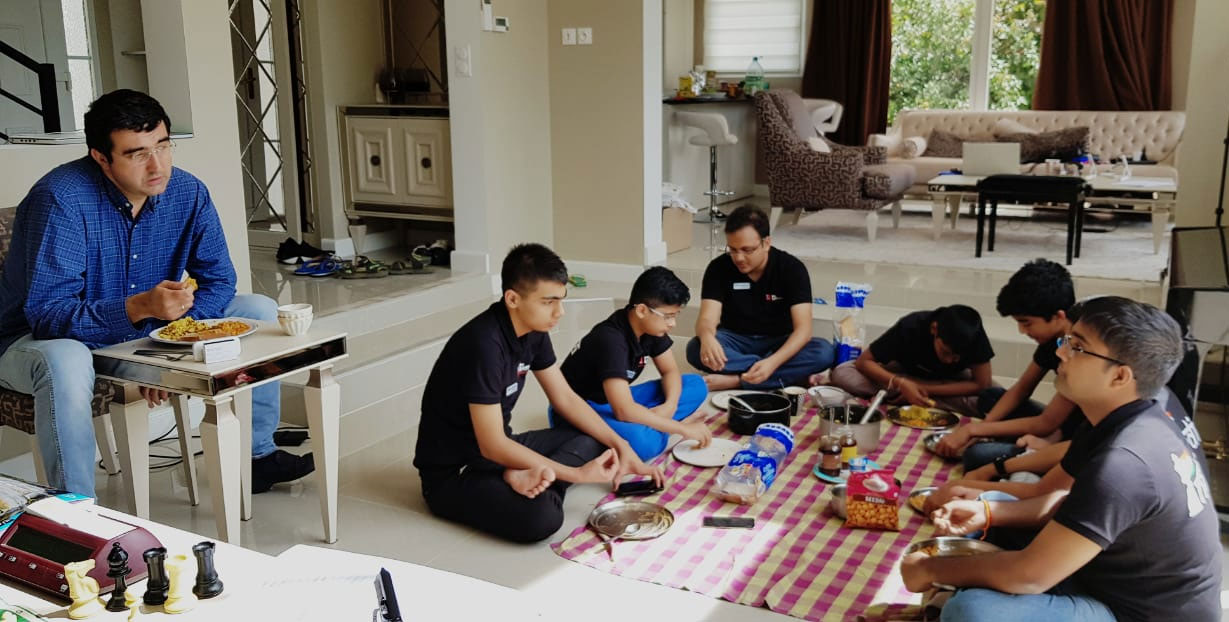
Hace falta comida si el coco te debe funcionar bien

Y también hace falta tomar un poco de aire de vez en cuando y hacer las compras, por supuesto

Tranquilidad en el campo
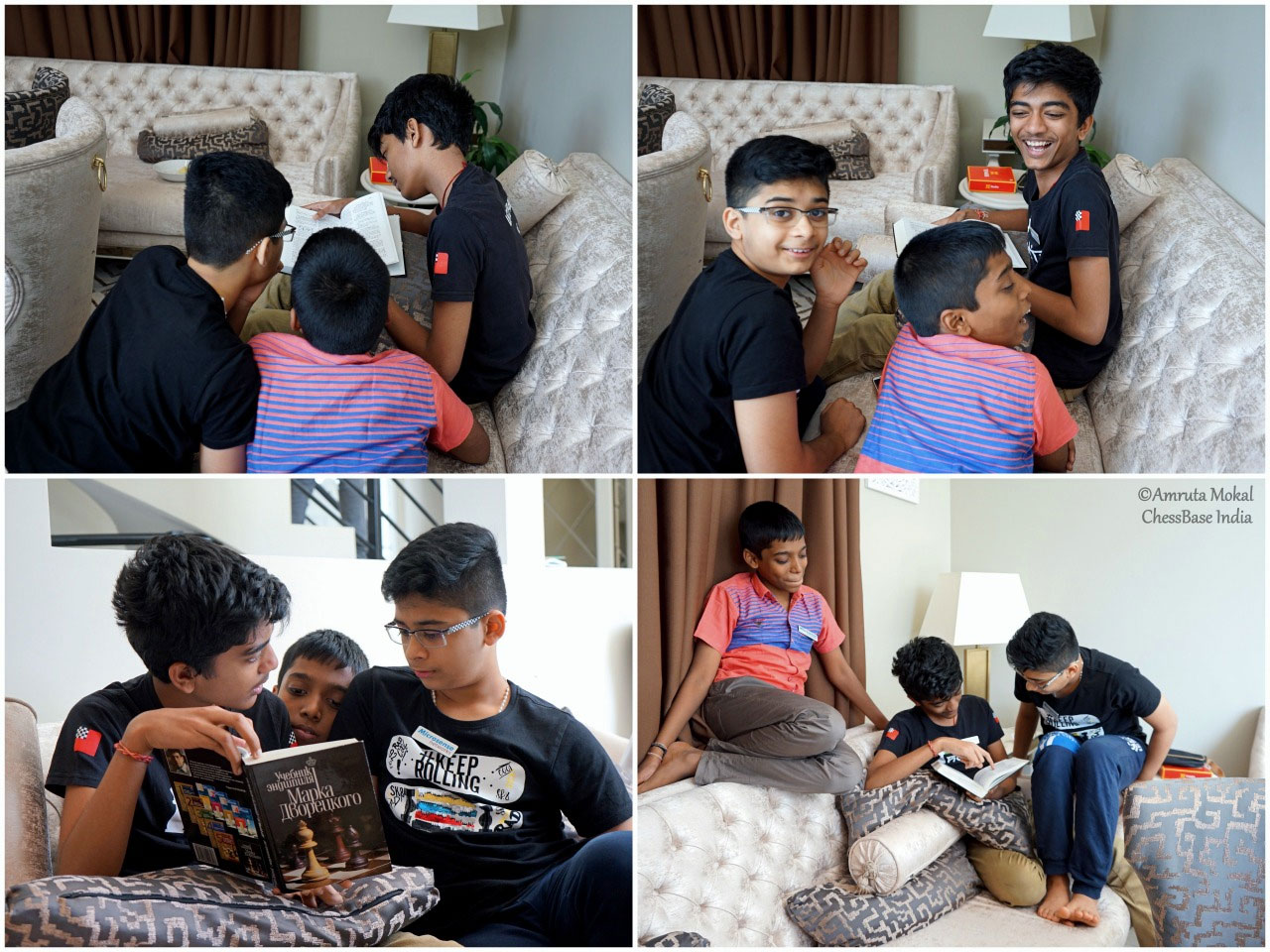
Y eso es como se pasan los momentos de recreo (el libro es "Dvoretsky's Endgame Manual")
Base de datos de partidas en DVD-ROM. Incluye más de 7,6 millones de partidas, 72.000 partidas incluyen comentarios de jugadores de alto nivel. Con número de serie para tener acceso a las actualizaciones online: 250.000 partidas nuevas al año
Enciclopedia de Aperturas con 540.000 jugadores y 38.500 fotografías.
El reto de Frederic Friedel
El viernes por la tarde hablamos por Skype con Frederic Friedel en Hamburgo. Fred tiene mucha experiencia con los niños prodigios y talentos de ajedrez. Estamos hablando de Nigel Short, Garry Kasparov, Vishy Anand, Vladimir Kramnik, Peter Leko, las hermanas Polgar, Magnus Carlsen y muchos jugadores más que Frederic ha conocido y acompañado y albergado en su casa desde que eran muy jóvenes.
Les advirtió:
"Cuando estéis analizando con Kramnik os daréis cuenta de que hay muchas cosas que os explica que os quedan claros inmediatamente. Pero también habrá algunas cosas que a primera vista os parecerán extrañas o misteriosas. Escuchadle bien, especialmente en esas partes. Kramnik está pensando en categorías por parte todavía desconcidas para vosotros. Procurad comprenderlas y asimilar esa manera de pensar vosotros también".
(Nota de la redacción española: mientras tanto, Frederic en el camino hacia el lugar de la sesión de entrenamiento. Le han persuadido a apuntarse Kramnik, Sagar y los jóvenes talentos cuando hablaron por Skype.)
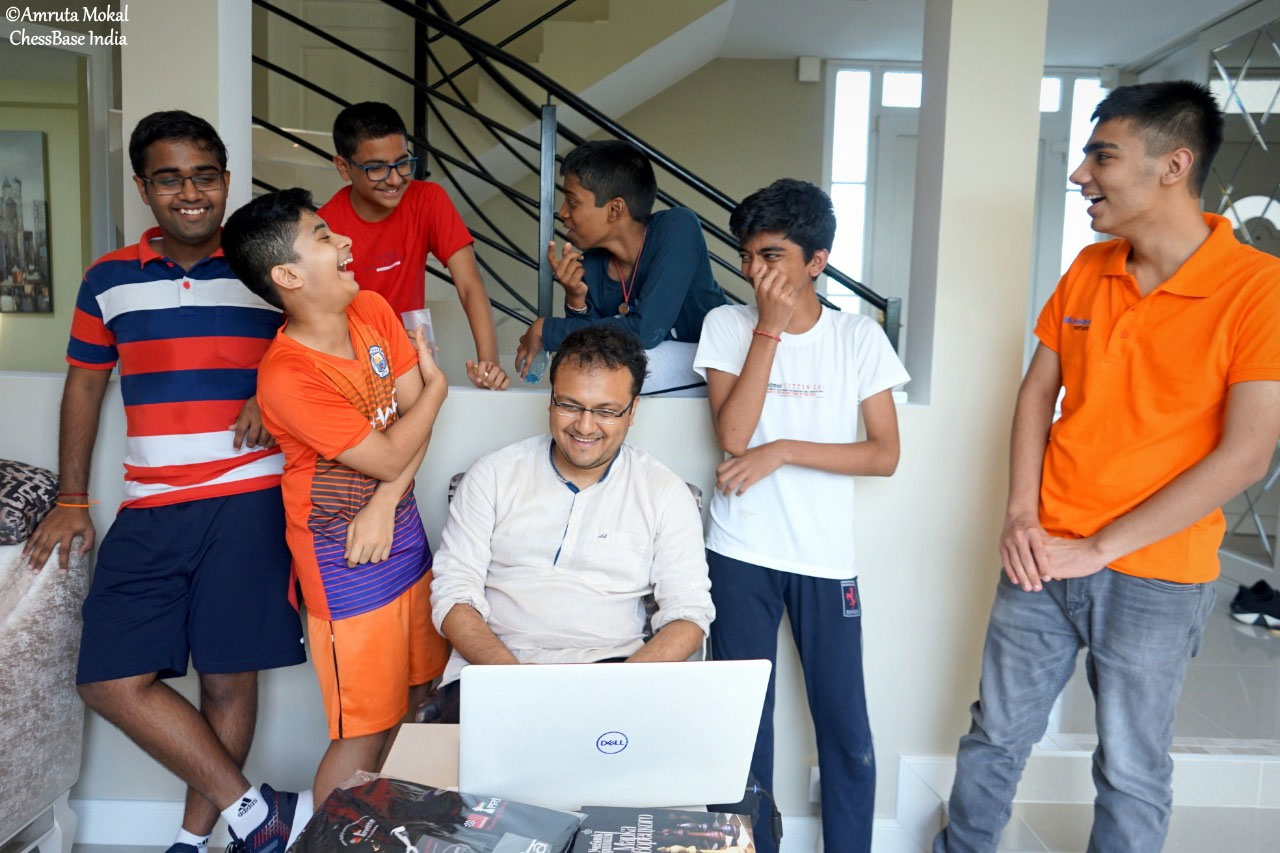
Para mientras tanto, Frederic también les planteó un problema de ajedrez.
Frederic comentó: "En su momento, en alguna de mis partidas le di jaque y mate a mi oponente con 6.gxf8=♘#. Pero no consigo recordar cuáles fueron los movimientos que habían conducido a esa posición. ¿Vosotros podríais ayudarme a recordarlo?"
Pragg inmediatamente le miró a Gukesh y le comentó: "Oye, pero eso no fue algo que tú men ensañaste el otro día?"
Efectivamente. Porque Frederic también le había planteado este problema a Gukesh durante su su visita a Hamburgo hace tres meses. Pero él y Pragg entonces no habían encontrado la solución. El que sí fue capaz de encontrarla era su compañero de 12 años, Savithashri, quien elaboró la respuesta durante una nocha con pocas horas de sueño.
En todo caso, a la mañana siguiente, Praggnanandhaa se acercó a la mesa de desayuno con la vista nublada. Le dije que por favor, que se sentase para desayunar con nosotros, pero no parecía tener apetito. Tras unos 10 minutos más con cara soñadora de repente exclamó: "¡Ahora ya lo sé!" Y efectivamente: había encontrado la solución para el problema planteado por Frederic:
Base de datos de partidas en DVD-ROM. Incluye más de 7,6 millones de partidas, 72.000 partidas incluyen comentarios de jugadores de alto nivel. Con número de serie para tener acceso a las actualizaciones online: 250.000 partidas nuevas al año
Enciclopedia de Aperturas con 540.000 jugadores y 38.500 fotografías.
Reportaje original en inglés por Sagar Shah (ChessBase India)
Fotografías: Amruta Mokal (ChessBase India)
Traducción al castellano y edición: Nadja Wittmann (ChessBase)
Enlaces
